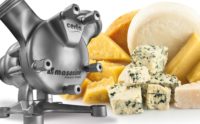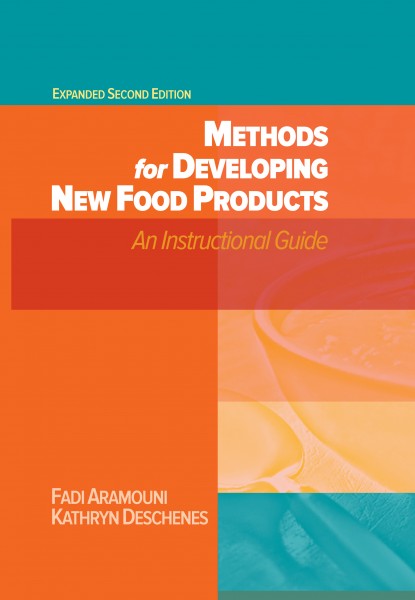Kraft eyes 2012 split, new home for meat, cheese
Kraft Foods Inc. said its board of directors intends by late 2012 to create two independent public companies: A high-growth global snacks business with estimated revenue (1) of approximately $32 billion and a high-margin North American grocery business with estimated revenue of approximately $16 billion. The company expects to create these companies through a tax-free spin-off of the North American grocery business to Kraft Foods shareholders.
The North American business will include such refrigerated and frozen items as Oscar Mayer prepared lunchmeats, sandwiches and meals; Kraft cheese; Philadelphia cream cheese and Jell-O refrigerated desserts.
"As our second quarter results once again show, our businesses are benefiting from a virtuous cycle of growth and investment, which we fully expect will continue," said Chairman and CEO Irene Rosenfeld. "We have built two strong, but distinct, portfolios. Our strategic actions have put us in a position to create two great companies, each with the leadership, resources and strong market positions to realize their full potential.
"The next phase of our development recognizes the distinct priorities within our portfolio," she continued. "The global snacks business has tremendous opportunities for growth as consumer demand for snacks increases around the world. The North American grocery business has a remarkable set of iconic brands, industry-leading margins, and the clear ability to generate significant cash flow."
Strategic rationale
Kraft Foods has transformed its portfolio by expanding geographically and by building its presence in the fast-growing snacking category. A series of strategic acquisitions, notably of LU biscuit from Danone and of Cadbury Plc, together with the strong organic growth of its own brands, have made Kraft Foods a leading snack company. At the same time, Kraft, Northfield, Ill., says it has continued to invest in its North American brands, while implementing a series of cost management initiatives. As a result, Kraft says it has delivered "strong results in very challenging economic conditions."
Kraft said detailed reviews by its board and management suggest that these two businesses would now benefit from being run independently of each other -- rather than as part of the same company.
Kraft said believes creating two public companies would offer a number of opportunities:
Each business would focus on its distinct strategic priorities, with financial targets that best fit its own markets and unique opportunities.
Each would be able to allocate resources and deploy capital in a manner consistent with its strategic priorities in order to optimize total returns to shareholders.
Investors would be able to value the two companies based on their particular operational and financial characteristics and thus invest accordingly.
Creating two companies
Global snacks will consist of the current Kraft Foods Europe and Developing Markets units as well as the North American snacks and confectionery businesses. As an independent company, global snacks would have estimated revenues of approximately $32 billion and a strong growth profile across numerous fast-growing markets, officials said. Approximately 75 percent of revenues would be from snacks around the world, and approximately 42 percent would come from developing markets, including a diversified presence in numerous highly attractive emerging markets.
The business would have a strong presence in the fast-growing and high-margin instant consumption channel. The non-snacks portion of the portfolio would consist primarily of powdered beverages and coffee, which have a strong growth and margin profile in developing markets and Europe. Key brands would include Oreo and LU biscuits, Cadbury and Milka chocolates, Trident gum, Jacobs coffee, and Tang powdered beverages.
The North American grocery business would consist of the current U.S. Beverages, Cheese, Convenient Meals and Grocery segments and the non-snack categories in Canada and Food Service. With approximately $16 billion in estimated revenue, this business would be one of North America's largest food and beverage companies.
The North American grocery business would have a highly competitive retail presence, cost leadership and a continued commitment to innovation and marketing excellence, said Kraft. North America's strategic priorities would be to build on its leading market positions by growing in line with its categories while maintaining a sharp focus on its cost structure. Capitalizing on the investments that the company has made during its transformation, an independent North American business would be managed to deliver reliable revenue growth; strong margins and free cash flow; and a highly competitive dividend payout. Key brands would include Kraft macaroni and cheese, Oscar Mayer meats, Philadelphia cream cheese, Maxwell House coffee, Capri Sun beverages, Jell-O desserts and Miracle Whip salad dressing.
Next steps
Kraft said its management is developing detailed plans for the board's further consideration and final approval. To execute the transaction requires further work on structure, management, governance, and other matters, which will take approximately 12 or more months. The current target is to launch the new companies before year-end 2012.
"Our employees' hard work and accomplishments have transformed Kraft Foods and enabled us to take this next step in the company's evolution," said Rosenfeld. "Our global snacks and North America grocery businesses both have terrifically talented and dynamic people. I'm confident that we will maintain the winning spirit that has been key to our success." She continued, "The focus and other benefits that come from creating two independent companies will provide even greater opportunities for our people and our brands."
The North American business will include such refrigerated and frozen items as Oscar Mayer prepared lunchmeats, sandwiches and meals; Kraft cheese; Philadelphia cream cheese and Jell-O refrigerated desserts.
"As our second quarter results once again show, our businesses are benefiting from a virtuous cycle of growth and investment, which we fully expect will continue," said Chairman and CEO Irene Rosenfeld. "We have built two strong, but distinct, portfolios. Our strategic actions have put us in a position to create two great companies, each with the leadership, resources and strong market positions to realize their full potential.
"The next phase of our development recognizes the distinct priorities within our portfolio," she continued. "The global snacks business has tremendous opportunities for growth as consumer demand for snacks increases around the world. The North American grocery business has a remarkable set of iconic brands, industry-leading margins, and the clear ability to generate significant cash flow."
Strategic rationale
Kraft Foods has transformed its portfolio by expanding geographically and by building its presence in the fast-growing snacking category. A series of strategic acquisitions, notably of LU biscuit from Danone and of Cadbury Plc, together with the strong organic growth of its own brands, have made Kraft Foods a leading snack company. At the same time, Kraft, Northfield, Ill., says it has continued to invest in its North American brands, while implementing a series of cost management initiatives. As a result, Kraft says it has delivered "strong results in very challenging economic conditions."
Kraft said detailed reviews by its board and management suggest that these two businesses would now benefit from being run independently of each other -- rather than as part of the same company.
Kraft said believes creating two public companies would offer a number of opportunities:
Each business would focus on its distinct strategic priorities, with financial targets that best fit its own markets and unique opportunities.
Each would be able to allocate resources and deploy capital in a manner consistent with its strategic priorities in order to optimize total returns to shareholders.
Investors would be able to value the two companies based on their particular operational and financial characteristics and thus invest accordingly.
Creating two companies
Global snacks will consist of the current Kraft Foods Europe and Developing Markets units as well as the North American snacks and confectionery businesses. As an independent company, global snacks would have estimated revenues of approximately $32 billion and a strong growth profile across numerous fast-growing markets, officials said. Approximately 75 percent of revenues would be from snacks around the world, and approximately 42 percent would come from developing markets, including a diversified presence in numerous highly attractive emerging markets.
The business would have a strong presence in the fast-growing and high-margin instant consumption channel. The non-snacks portion of the portfolio would consist primarily of powdered beverages and coffee, which have a strong growth and margin profile in developing markets and Europe. Key brands would include Oreo and LU biscuits, Cadbury and Milka chocolates, Trident gum, Jacobs coffee, and Tang powdered beverages.
The North American grocery business would consist of the current U.S. Beverages, Cheese, Convenient Meals and Grocery segments and the non-snack categories in Canada and Food Service. With approximately $16 billion in estimated revenue, this business would be one of North America's largest food and beverage companies.
The North American grocery business would have a highly competitive retail presence, cost leadership and a continued commitment to innovation and marketing excellence, said Kraft. North America's strategic priorities would be to build on its leading market positions by growing in line with its categories while maintaining a sharp focus on its cost structure. Capitalizing on the investments that the company has made during its transformation, an independent North American business would be managed to deliver reliable revenue growth; strong margins and free cash flow; and a highly competitive dividend payout. Key brands would include Kraft macaroni and cheese, Oscar Mayer meats, Philadelphia cream cheese, Maxwell House coffee, Capri Sun beverages, Jell-O desserts and Miracle Whip salad dressing.
Next steps
Kraft said its management is developing detailed plans for the board's further consideration and final approval. To execute the transaction requires further work on structure, management, governance, and other matters, which will take approximately 12 or more months. The current target is to launch the new companies before year-end 2012.
"Our employees' hard work and accomplishments have transformed Kraft Foods and enabled us to take this next step in the company's evolution," said Rosenfeld. "Our global snacks and North America grocery businesses both have terrifically talented and dynamic people. I'm confident that we will maintain the winning spirit that has been key to our success." She continued, "The focus and other benefits that come from creating two independent companies will provide even greater opportunities for our people and our brands."
Looking for a reprint of this article?
From high-res PDFs to custom plaques, order your copy today!






